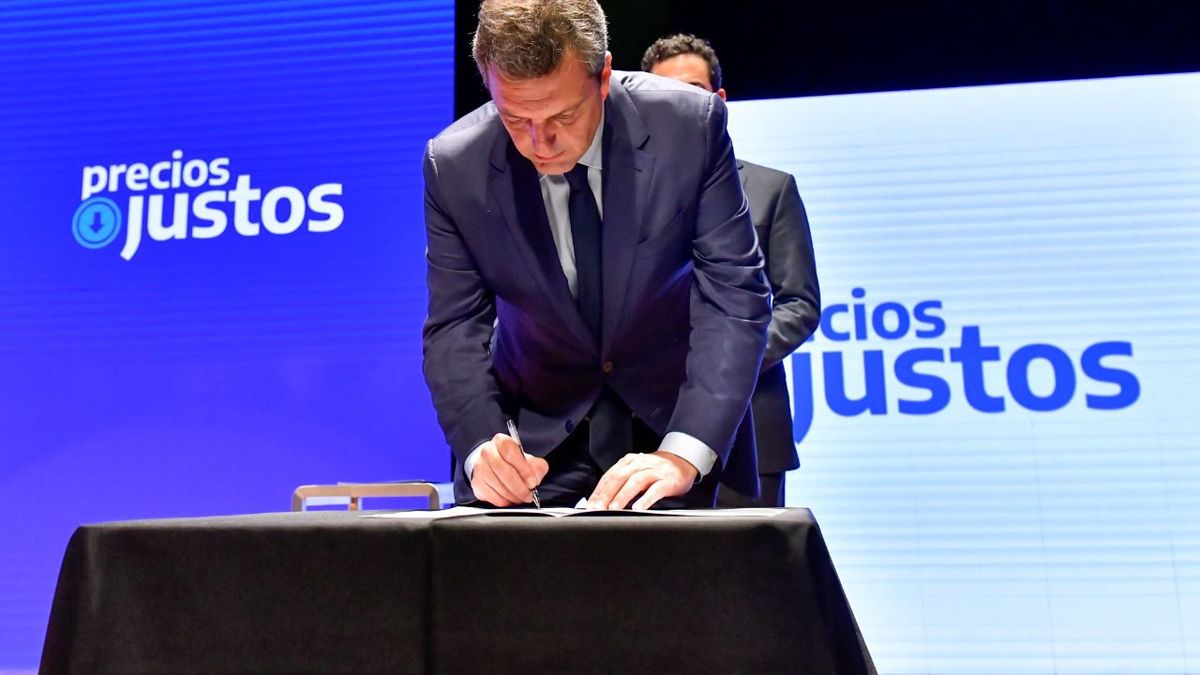How to get to 3%
Massa recounted the goal set by the economic team: “The objective is to follow a path that allows us to lower inflation by one point every 60-75 days. We started at 7.5% in July, in the second two months we parked it at 6 and the goal is to reach April with number 3 ahead. That is why in the budget we set the goal of 60%, we aspire to follow a path of reduction”.
In fact, he revealed that the issue was at the meeting with the IMF last week in the G20: “One of the comments by the head of the Fund was the fact that she was satisfied to see that from August to today we had already gone down monthly inflation by 30%”.
Regarding how to do it, in the radio interview he explained: “I am sure that we are going to continue downloading it, because when you order the accounts, you start to accumulate reserves, you order the interest rate and align it with the goals of economic policy, and you walk a path of agreement to achieve better offers from the productive sectors to the consumerYou will achieve the goal.”
At the point of “sorting the accounts”, primary spending fell 16.2% year-on-year in real terms in the July-October average, the period in which Silvina Batakis was there for a few weeks and then Massa took office, while in the first half of January-June Spending climbed an average of 12.5% year-on-year, during the administration of former minister Martín Guzmán, according to the Congressional Budget Office.
In relation to reserves, for the consulting firm Invecq it is one of the “latent risks”, since it ensures that the Central Bank has only US$3.5 billion, and has sold US$969 million so far in November. Massa assured that it will be the modification of the use of the swap with China that will allow solving this problem: it will imply that of the current US$18,000 million of swap with China, there will be US$5,000 million that will become “freely available”. Thus, he anticipated that 2022 will close with US$6.5 billion of “own reserves”, and another US$5 billion freely available from the swap.
As for the price agreements, as Ámbito was able to find out from official sources, This week the formalization and implementation of Fair Prices will be finalized, with the signage in the supermarkets, and the signatures with the 117 companies. In the Secretariat of Commerce they assure that the almost 1900 products that will be frozen for months are already on the shelves, “with the prices that were agreed upon.” To reach local businesses, they aspire to get supplies from wholesalers, which will also have regulated prices for 120 days.
The doubts of the market
The market doubts that the government’s projection can be met. In part, due to how the exchange rate moves: the depreciation of the last week was at a rate of 6.6% according to Ecolatina, so continuing with this trend will accumulate 13 months of acceleration in the rate of devaluation, and for the third consecutive month aligned with the monthly inflation rate.
In addition, for Delphos Investment, what they call “the rate anchor” will end, with the unfreezing of public services and transportation. Inflation travels at a “cruising speed” of 6-7%, a “nominal rhythm validated by recently closed parities, the interest rate, the nominal exchange rate, and the rise in regulated prices, which are indexed to inflation pass”.
Along the same lines, Econviews anticipated that after the tariff adjustments “the effects of the second round will begin to appear, and it will be difficult to break the 6% floor.” The consultant led by Miguel Kiguel detailed: “Since Alberto Fernández took office, they have increased only 162.8%, when accumulated core inflation has already reached 273.3%. In other words, they still have a lot of room to go up.” What could counteract this rearrangement of regulated entities, according to Ecoviews, is “the contraction of activity”.
In fact, at LCG they highlighted that the drop in wholesale inflation for the second consecutive month “can be seen as a success”, but “a large part responds to a drop in meat prices, which acts as a counterweight to the dynamics of food, in a context where consumption is at its lowest point in the last 20 years”.
Why not a shock plan?
The drop in inflation will play a key role in the recovery of wages, without an income policy yet defined and with the fixed sum practically ruled out. “We aspire that the improvement in income is not produced only by better parities and bonuses, but by a reduction in inflation. The greatest debt that we have as a government is the purchasing power of the workers, which is why our greatest enemy is inflation and our most important objective is to reduce it”, said the minister.
In addition, Massa admitted that in the first days of August the possibility of carrying out a shock stabilization plan was on the table. Last week, Gabriel Rubinstein, Secretary of Economic Policy, assured that he would have liked to apply it, but that “there was no consensus.” Massa explained why it was not applied, and even quoted Máximo Kirchner: “More important than making shocks that hurt sectors of society, is to follow a path that consolidates the objectives. Having a fiscal order cannot be a thing of a month, let’s remember the shock of the 13% discount for retirees and how that government ended with López Murphy. The shocks work in power points, but reality requires programs with the people inside.
Having said this, he ruled out a devaluation that implies a jump in the exchange rate: “You have to tell people that making the currency lose value is pushing more people into poverty and destroying a moment of high production.”
Source: Ambito
David William is a talented author who has made a name for himself in the world of writing. He is a professional author who writes on a wide range of topics, from general interest to opinion news. David is currently working as a writer at 24 hours worlds where he brings his unique perspective and in-depth research to his articles, making them both informative and engaging.




